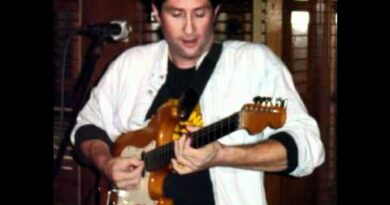How to get an authentic Vintage Guitar Tone
How to get an authentic 60s guitar sound.
I was working on a project a while ago and for the track I was working on I needed an authentic 60s guitar tone.
I tried all kinds of plugins and sims but nothing seemed to sound the way I had imagined it. I decided to do some research and ended up going down a very deep rabbit hole which turned out to be very educational and fun.
So today I thought I’d share some of the things I discovered and maybe you might even want to try some of them out.
Thanks for watching and don’t forget to like and subscribe.
Join this channel to get access to perks:
https://www.youtube.com/channel/UCa446t4UFVUvoIkot03eMHA/join
#vintageguitar #guitargear #60sguitar
#authentic #Vintage #Guitar #Tone
Originally posted by UCa446t4UFVUvoIkot03eMHA at https://www.youtube.com/watch?v=cY6uz3vy5VM




I find for those Revolver era sounds, P90s go a long way. Also picking very near the bridge helps for bite. I have an Aclam Dr Robert pedal which is awesome.
Here's something for you. There's a video on Youtube where Eric Clapton explains how he got the "Woman Tone" on his SG ("The Fool"). https://www.youtube.com/watch?v=y5Wl4X8Yp2E (Of course the cigarette stuck in the strings might also affect the tone LOL)
And that vintage guitar sound back in the 60s was played on new instruments.
Good vid!
Cool vid. Great point about limited FX. Indeed, for 60s sound, the reverb type is important, should probably be spring reverb
The never ending evil of tone chasing????????????
oh lol there's the felt picks…people found other ways to get close enough or same attack timbre while improving almost everything else about them.
Leather picks were for those who wanted harder/less dusty ones 😉 Hard rubber and wood picks exist too lol but this is in the bass world for the most part.
With more lead players in the bass register or baritone and using rubber bridges (check Madison Cunningham's Pin it Down performance for a really good example of the soloing/accompaniment I mean) and the few but increasing actually installing real mutes on instruments that didn't have them from the factory it's unsurprising to see felt picks being stumbled across and discussed. Just wait till they find out most 8 string guitar music was written for classical guitar (Brahms).
Taped strings are neat but they only really get a lot of use in the guitar world with jazz players. Again, I have experiments I want to run with them based on the one set of LaBella White Gold (not affiliate) bass strings I got because they're not dull or lackluster as people assume as the tape is magnetically transparent, meaning it's actually got a lighter gauge core to fit in the same nut/bridge slot, which means not a rounder heavier wooden upright sound like flats or thicker gauge but generally brighter and more bell or piano like tone; also the cores are not flat, they seem to be half rounds or full rounds but thinly wound under the tape. Plus the tape protects them from oxidation/corrosion, which means until they break they don't change character a lot over their life. The jazz sets only tape the strings that are typical wound so I'm not sure how I'm going to like that or if it will, again since the tape is transparent to pickups, not make a difference in tone but only performance, stability, and lifespan compared to the untaped strings in the same set.
I always play with flatwounds. Thanks for another informative video.